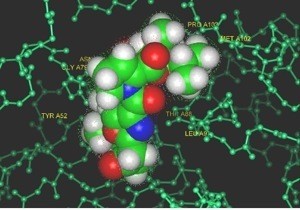Structure of Membrane-Active Peptides
Advancements in bionanotechnology and biomedicine require insights at the molecular level. The Separovic Lab @ Bio21, studies the biophysical chemistry of membrane-active peptides and proteins relevant to disease states and treatments.

The structure-function relationships of macromolecular assemblies are studied by solid-state NMR, which can be used to determine the structure and dynamics of protein complexes and constituents of biological membranes at the atomistic level.
We have determined the 3D structure of peptides, the antibiotic gramicidin A and the bee toxin melittin, in phospholipid membranes using solid-state NMR methods that are now being extended to membrane proteins. Using NMR spectroscopy, complemented by a range of biophysical techniques, we aim to determine the mechanism of action of membrane polypeptides in situ.

Together with multidisciplinary research groups we have investigated biological macromolecules, geopolymers and ionic liquids for pharmaceutical & industrial applications. Current focus is on the structure & interactions of amyloid peptides from Alzheimer’s disease, pore-forming toxins and antibiotic peptides in biological membranes